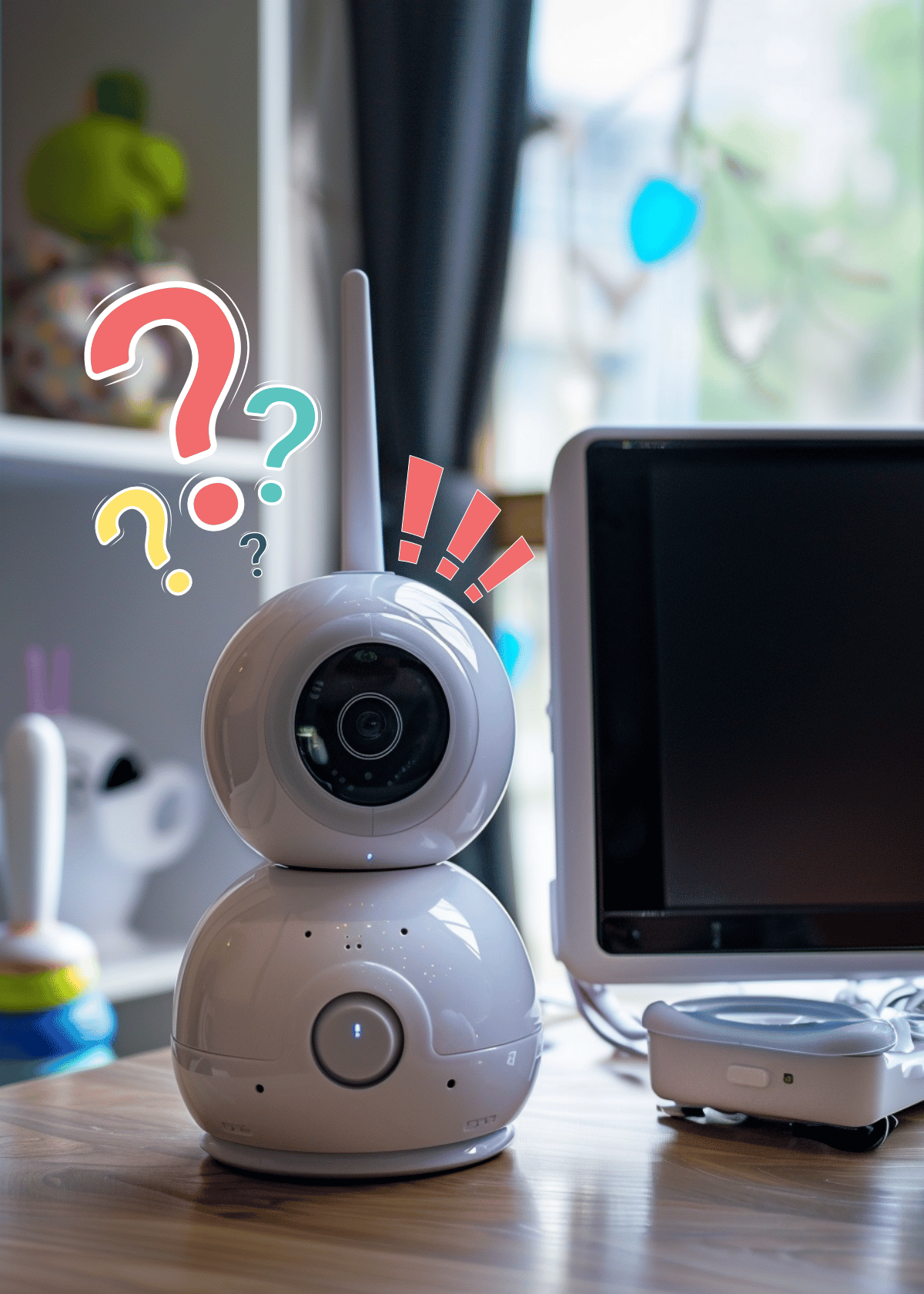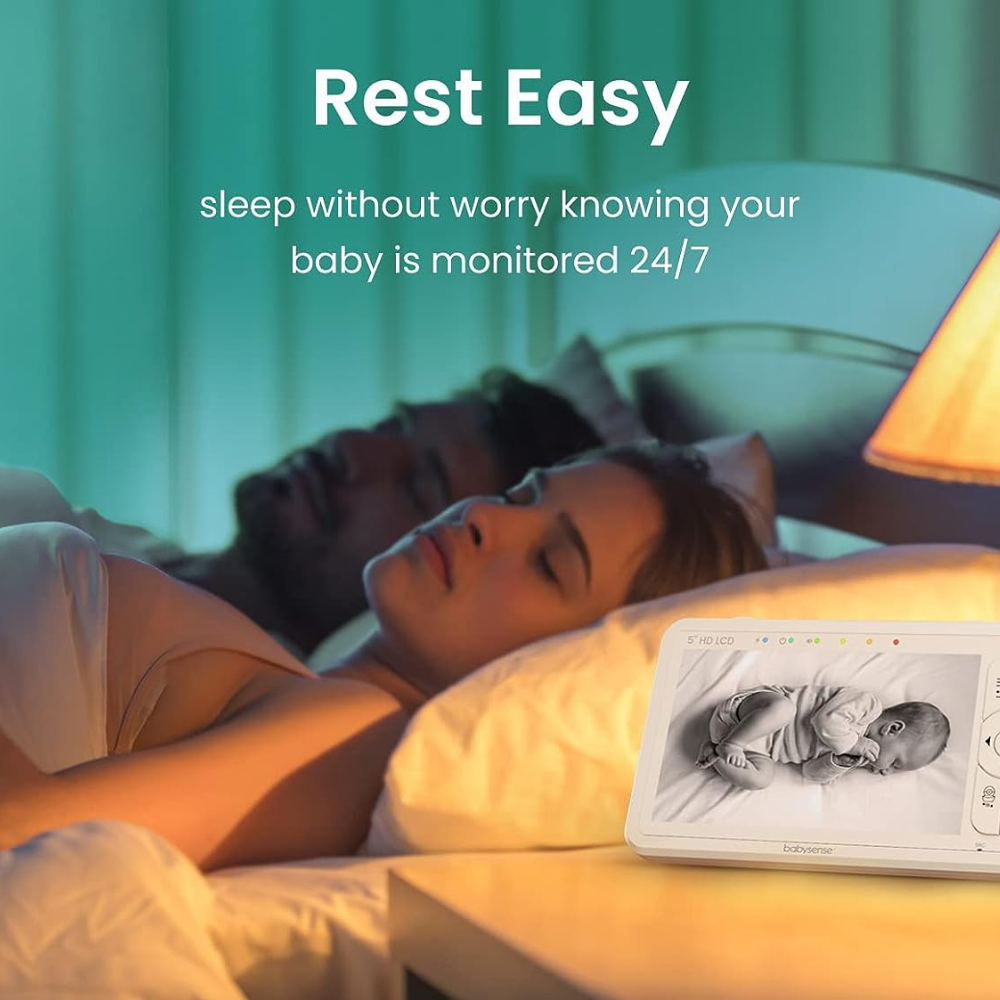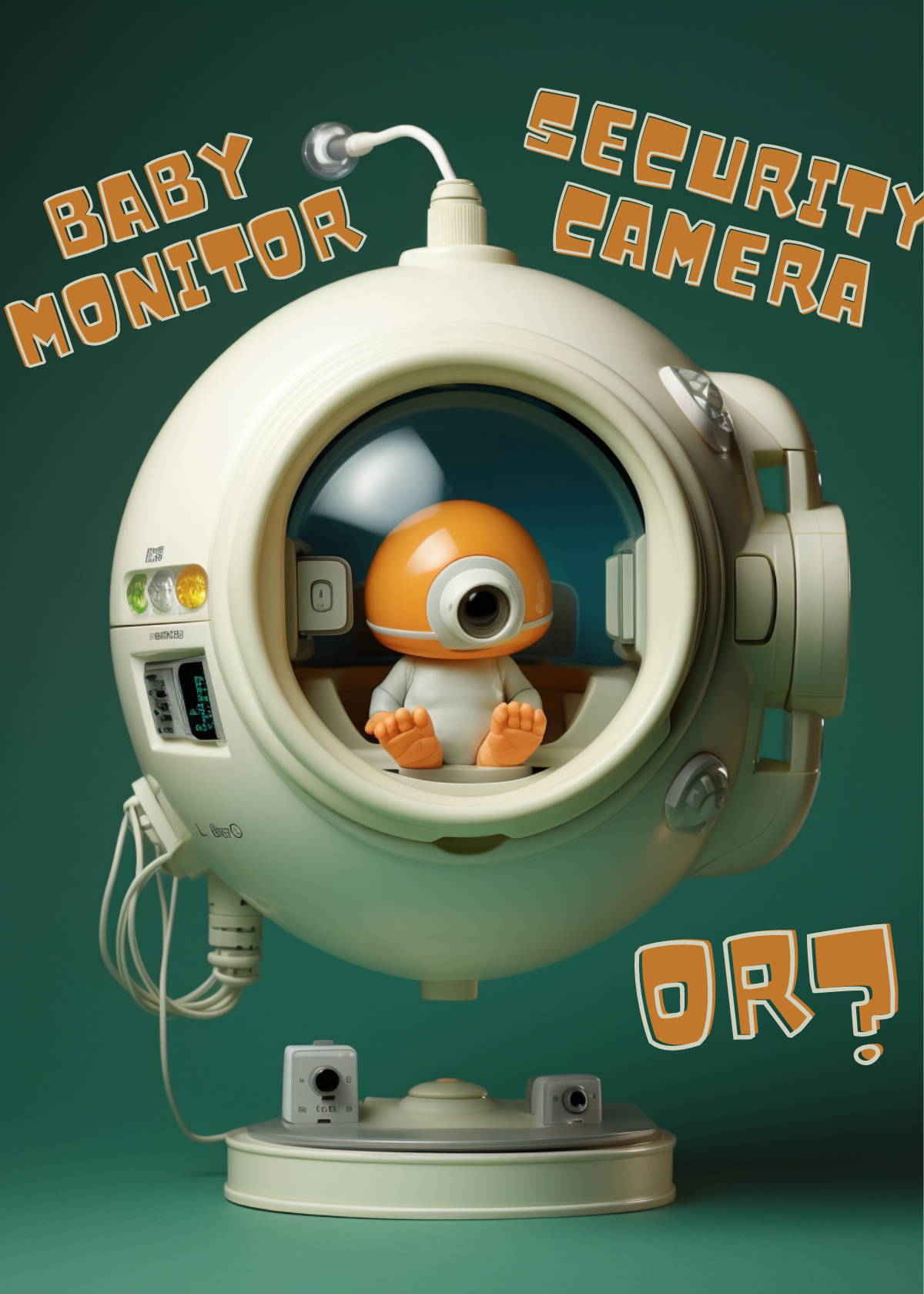How Do Non WiFi Baby Monitors Work? And Why Does Every Parent Absolutely Need One? 👶

A non-WiFi baby monitor is a device that allows you to keep an eye and ear on your baby without being in the same room. It consists of two parts: a baby unit placed in your baby's room and a parent unit that you keep with you.
The key difference between non-WiFi and WiFi baby monitors is how they transmit signals. Non-WiFi baby monitors use radio frequencies to transmit audio and video from the baby unit to the parent unit. This means they create their own secure network that is separate from your home WiFi network. If you are interseted to know how these non wifi baby monitor work, keep Reading:
⇨ Functioning of Non-Wifi Baby Monitors
Non-WiFi baby monitors operate on a closed circuit system, meaning they do not rely on an internet connection to function. Here's a simplified explanation of how non-WiFi baby monitors work:
- Camera Unit: The non-WiFi baby monitor consists of a camera unit that is placed in your baby's room. This camera captures and records video and audio of your baby's activities.
- Transmitter: The camera unit is connected to a transmitter, which wirelessly transmits the audio and video signals to the receiver unit.
- Receiver Unit: The receiver unit is the device that you carry with you to monitor your baby. It receives the signals from the camera unit and displays the video feed on its screen, and plays the audio through its speakers or headphones.
- Closed Circuit Transmission: The audio and video signals transmitted from the camera to the receiver units typically operate on a specific frequency or channel. This closed circuit system ensures that only the specific receiver unit can receive and display the signals. It does not require an internet connection to function, and the transmission range is limited to the distance between the camera and receiver units.
- Power Source: Both the camera unit and the receiver unit require a power source to operate. The camera unit is usually plugged into a power outlet, while the receiver unit is powered by either batteries or by being plugged into an outlet.
Since non-WiFi monitors create their own network, they are not susceptible to interference from other devices using your WiFi. This can make them more reliable and secure compared to WiFi baby monitors that transmit over your home network. However, non-WiFi monitors typically have a shorter range compared to WiFi monitors.
In general, non-WiFi baby monitors tend to be more affordable than WiFi monitors. They work best for monitoring one baby in a single room or area. WiFi monitors offer more advanced features and the ability to view multiple cameras, but they require a strong and reliable WiFi network.
How Non-WiFi Baby Monitors Connect? 🔌

Image Credit-Amazon
Non-WiFi baby monitors use radio frequencies to transmit audio and video signals between the monitor and receiver. This allows the parent to view and listen to their baby from a different room without needing a WiFi connection.
The monitor and receiver units are paired and synchronized during the initial setup. The parent first powers on the monitor unit and places it in the baby's room. They then power on the receiver unit and follow the on-screen instructions to pair the two devices.
The units communicate over one of two main radio frequency types:
➨ FHSS (Frequency Hopping Spread Spectrum): The monitor and receiver hop between multiple frequencies to transmit signals. This makes it difficult for the signal to be intercepted. The parent must first synchronize the units so they hop to the same frequencies at the same time.
➨ DECT (Digital Enhanced Cordless Telecommunications): The monitor and receiver use a dedicated frequency pair to communicate. The parent simply needs to power on the units and follow the pairing instructions to synchronize them.
Once paired and synchronized, the monitor and receiver will automatically connect whenever they are powered on within range of each other. The parent can then view and listen to their baby in real time through the receiver unit.
Are WiFi Baby Monitors Better? 📶
In this section we're diving into the fascinating world of baby monitors. Specifically, we'll be exploring the age-old question: are WiFi baby monitors better? Well, buckle up, because the answer isn't as black and white as you might think. In this discussion, we'll take a closer look at both WiFi and non-WiFi baby monitors, examining their respective pros and cons. So, without further ado, let's jump right in!
➮ Pros of WiFi Baby Monitors:
One great advantage of WiFi baby monitors is their flexibility. With a WiFi monitor, you can check on your baby from virtually anywhere, as long as you have an internet connection. Whether you're at work or on a weekend getaway, the ability to monitor your little one remotely can provide peace of mind for busy parents. Additionally, many WiFi monitors offer advanced features like two-way audio, room temperature monitoring, and even lullaby playback.
➮ Cons of WiFi Baby Monitors:
While WiFi baby monitors bring convenience, they also come with a few drawbacks. Firstly, their reliance on an internet connection means that any network disruptions can hinder their effectiveness. This could potentially lead to moments of panic and worry if the connection drops unexpectedly. Moreover, as they are connected to the internet, there are potential security risks, raising concerns about the privacy and safety of your baby's footage.
➮ Pros of Non-WiFi Baby Monitors:
Non-WiFi baby monitors, though lacking the bells and whistles of their WiFi counterparts, offer their own set of advantages. Firstly, they operate independently of an internet connection, ensuring consistent monitoring without worrying about network outages or interruptions. This reliability is especially beneficial for those living in areas with unreliable or limited internet access. Furthermore, non-WiFi baby monitors eliminate the security vulnerabilities associated with being connected to the web, providing an extra layer of privacy and peace of mind.
➮ Cons of Non-WiFi Baby Monitors:
Non-WiFi baby monitors, while reliable, lack the convenience of remote viewing. Without a WiFi connection, you're limited to the range of the monitor itself, making it less practical for parents who want to simultaneously monitor their baby and attend to other tasks in different areas of their home. Additionally, non-WiFi monitors usually have fewer advanced features compared to WiFi models, such as the ability to play lullabies or remotely adjust camera angles.
Types of Baby Monitors Used 📊
When it comes to choosing a baby monitor, there are various types to consider. In recent years, we have witnessed a noticeable shift in the preferences of many parents, with a growing trend towards non-WiFi monitors. In this discussion, we will explore the different types of baby monitors and shed light on the reasons behind this emerging preference for non-WiFi options. Let's dive in and discover the world of baby monitors!
⒈ Traditional Audio Monitors:
Traditional audio monitors were the go-to choice for parents for a long time. These monitors transmit audio signals from your baby's room to a receiver, allowing you to hear your baby's sounds and movements. While they lack video features, audio monitors are often found to be simple, reliable, and cost-effective, making them a popular choice for many.
⒉ Video Baby Monitors:
Video baby monitors have gained immense popularity in recent years, thanks to advancements in technology. These monitors offer both audio and visual capabilities, allowing parents to see and hear their baby in real-time. With video monitors, you can enjoy the added assurance of visually monitoring your little one, especially during nap times or in situations when sound alone may not suffice.
⒊ WiFi Baby Monitors:
WiFi baby monitors have emerged as a more modern option. These monitors connect to your home's wireless network, granting you the ability to access live video and audio feeds remotely through your smartphone or other connected devices. While WiFi monitors provide convenience and advanced features like remote viewing and smartphone notifications, they have raised concerns regarding security and privacy.
⒋ Non-WiFi Baby Monitors - The Shift in Preference:
In recent times, we have witnessed a growing trend towards non-WiFi baby monitors. This shift in preference is driven by security and privacy considerations. Many parents are concerned about potential vulnerabilities associated with WiFi monitors, specifically the risk of unauthorized access to their baby's footage. With non-WiFi monitors, parents can feel more confident that their baby's privacy is protected, as these monitors operate on a closed circuit and do not connect to the internet.
Addressing Security and Privacy Concerns:
The preference for non-WiFi baby monitors stems from the desire to prioritize the security and privacy of our little ones. While companies have made efforts to improve the security measures in WiFi monitors, the peace of mind provided by non-WiFi options is undeniable. By opting for a non-WiFi monitor, parents can rest assured knowing that their baby's monitoring system is not susceptible to hacking or unauthorized access.
Good, Your Baby Is Now Safe From The Internet!
As parents, choosing the right baby monitor is crucial for ensuring our little ones' safety and well-being. While audio and video monitors continue to be popular choices, the emerging trend towards non-WiFi baby monitors reflects a growing concern for security and privacy. As technology advances, it is essential to weigh the pros and cons of each monitor type and select the one that aligns best with your preferences and priorities. Ultimately, the goal is to provide a secure and reliable monitoring solution that brings you peace of mind while nurturing your baby.
More On Baby Monitors ⬇👶⬇








